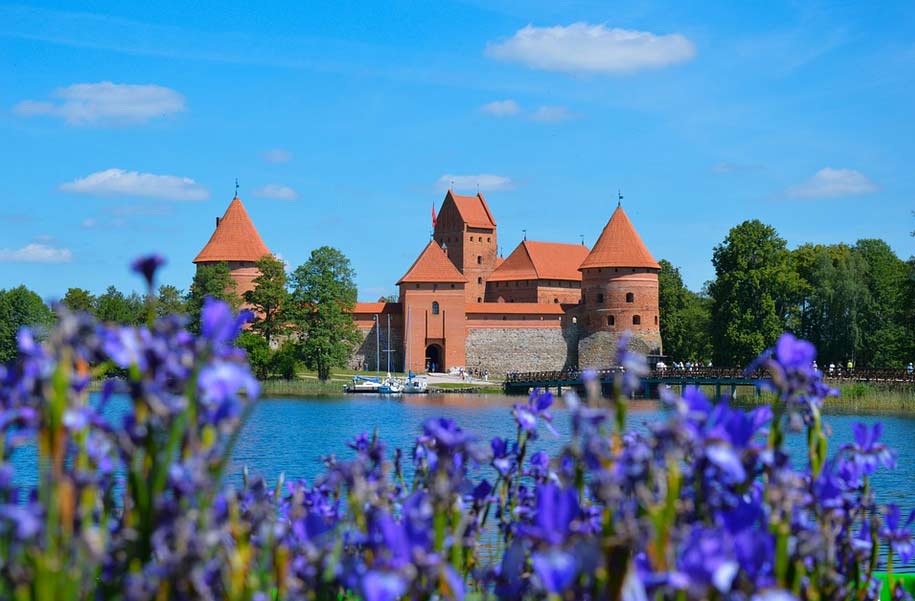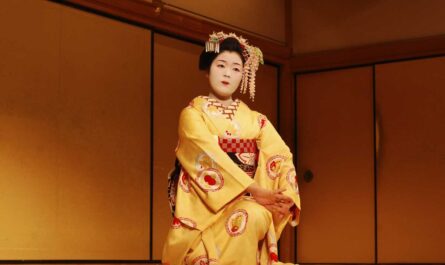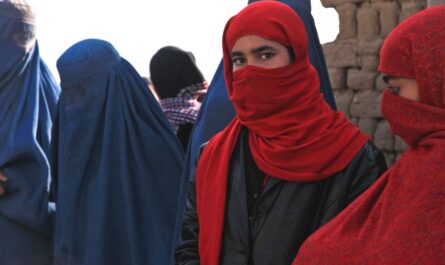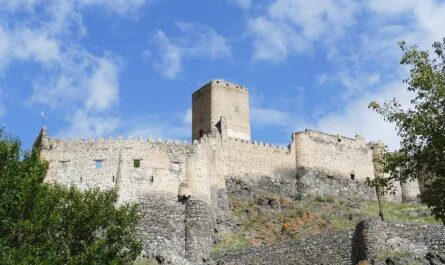There are many interesting cool fun facts about Lithuania. Learning Lithuanian presents a unique linguistic challenge compared to mastering English. Despite its complexity, especially for non-native speakers, those visiting or working in Lithuania will find a multilingual environment. While Lithuanian remains the official language, a significant portion of the population converses fluently in Russian and/or English. Whether one’s intention is practicality or leisure, the prevalence of these widely spoken languages facilitates communication and integration within Lithuanian society.
Fun, interesting facts about Lithuania
Lithuania boasts a rich history of aviation innovation dating back to the early 20th century. In 1922, Jurgis Dobkeviius crafted the first Lithuanian aircraft, a remarkable feat considering the era’s technological limitations. Subsequent advancements followed, with Alfonsas Maonis introducing practical innovations in 1925. Among his notable creations was an electric bell capable of simultaneous ringing across multiple locations, showcasing Lithuania’s early contributions to aviation and engineering. Let’s find below some very interesting, fun facts about Lithuania!
1. Easter Traditions in Lithuania: Embracing the Easter Granny
In Lithuania, Easter is celebrated with unique traditions that reflect the country’s cultural richness and familial bonds. Unlike the ubiquitous Easter Bunny in the United States, Lithuania honors the Easter Granny. This cherished figure delights children by leaving Easter eggs and chocolates in handcrafted nests placed outside their homes. The act symbolizes generosity and familial warmth.
A poignant custom involves breaking a single hard-boiled Easter egg into fragments, ensuring each family member receives a share. This ritual embodies unity and togetherness, underscoring the significance of familial bonds. Furthermore, the Easter feast is a grand affair, featuring sumptuous dishes, particularly meat-heavy suppers, marking the end of Lent. Notably, if lamb is absent from the table, tradition dictates the creation of a lamb-shaped butter sculpture, adding a whimsical touch to the celebration.
2. Economic Outlook and Investor Sentiment
Despite the ongoing tensions between Russia and Ukraine, investors in Lithuania remain optimistic about the country’s economic prospects. This sentiment is bolstered by the presence of the Baltic Sea States Council (CBSS), which includes Lithuania, Russia, and Ukraine among its members. According to the Association Investors’ Forum, a significant 43 percent of international firms operating in Lithuania foresee an expansion in demand for their products or services in the upcoming quarter.
Additionally, there is an anticipated increase of 37 percent in the workforce across these companies. This positive outlook underscores the resilience of Lithuania’s economy amidst geopolitical challenges and reflects the confidence of investors in its long-term stability and growth potential.
3. The Allure of Lithuanian Women
Lithuanian women are celebrated for their beauty and elegance, earning them recognition as among the most attractive globally. Their allure transcends borders, with Lithuanian girls captivating attention wherever they may be found. Characterized by their graceful demeanor, impeccable attire, and tastefully groomed appearance, a Lithuanian woman exudes sophistication and charm. Whether leisurely strolling or attending formal events, she exudes confidence and poise, complemented by a subtle yet refined sense of style.
4. Linguistic Complexity: Lithuanian Orthography
The Lithuanian language presents a fascinating study of linguistic diversity, characterized by its unique orthography. Utilizing a 32-letter Latin-script alphabet, Lithuanian orthography incorporates two letters that represent sounds not inherently native to the language. Additionally, the presence of five digraphs further enriches its phonetic system, adding layers of complexity to its written form. Despite these intricacies, the Lithuanian alphabet reflects the richness and intricacy of the language, offering a glimpse into its linguistic heritage and evolution.
5. Key Exports: Driving Lithuania’s Economy
Lithuania’s economic landscape is prominently shaped by its export industry, with refined petroleum reigning as the nation’s top export commodity, according to the Observatory of Economic Complexity. Accounting for a substantial 22.93 percent of total exports in 2012, refined petroleum plays a pivotal role in Lithuania’s trade portfolio. Additionally, fertilizer constitutes another notable export, contributing 3 percent to the country’s export revenue. Other significant exports encompass a diverse range of products including wheat, polyacetals, and chemicals, highlighting the breadth and depth of Lithuania’s export prowess on the global stage.
6. Culinary Delights: Exploring Lithuania’s Rich Gastronomic Heritage
Embark on a culinary odyssey through Lithuania’s diverse and flavorful cuisine, steeped in tradition and innovation. From the iconic Cepelinai, lovingly referred to as “Zeppelins,” to the savory allure of Fried Bread (Kepta Duona), Lithuanian gastronomy offers a tantalizing array of dishes to please every palate. Dive into the comforting warmth of Beetroot Soup (Burokėlių Sriuba) or relish the invigorating tang of Chilled Borscht (Saltibarsciai). Treat yourself to the delicate sweetness of Grybukai (Mushroom Cookies) or indulge in the rich decadence of Fried Curd Cakes and Potato Pancakes. And let’s not forget the savory goodness of Kibinai, each bite a testament to Lithuania’s culinary legacy.
7. Education System: Free and Compulsory Schooling
In Lithuania, children aged six to sixteen are entitled to free and compulsory education, ensuring access to learning for all. While public schools primarily conduct instruction in the Lithuanian language, many expatriate families opt for foreign schools such as the Vilnius International School to cater to their children’s educational needs.
8. Academic Excellence: Prestigious Institutions in Lithuania
Lithuania boasts a rich academic tradition, with institutions like the Vilnius University standing as shining beacons of excellence. Founded in 1579, Vilnius University holds the distinction of being not only Lithuania’s oldest university but also the oldest in the entire Baltic region. This prestigious institution continues to uphold its legacy of academic rigor and innovation, providing high-quality education to both domestic and international students.
9. Winter Wonderland: Celebrating Christmas in Lithuania
Lithuania transforms into a picturesque winter wonderland during the Christmas season, adorned with blankets of snow and glistening ice. While Christmas Day holds significance, it is overshadowed by the cultural importance of Christmas Eve, known as “Kios.” Families come together on Christmas Eve evening to partake in the grand Kios feast, a cherished tradition that symbolizes unity, joy, and abundance. Against the backdrop of wintry landscapes, the spirit of Christmas permeates the air, creating a magical ambiance that captivates locals and visitors alike.
10. Outdoor Paradise: Exploring Lithuania’s Natural Beauty
Lithuania beckons to expatriate families with a love for the great outdoors, offering a diverse tapestry of landscapes to explore. From rolling hills to dense forests, and serene rivers to majestic lakes, Lithuania boasts an abundance of natural wonders waiting to be discovered. Auktaitija National Park stands as a crown jewel among Lithuania’s natural treasures, boasting ancient pine trees dating back centuries and over 126 pristine lakes. For those seeking adventure, the LABAS Adventure Park offers an exhilarating experience amidst treetop trails and zip lines, providing endless opportunities for outdoor fun and exploration.
11. Urban Oasis: LABAS Adventure Park in Vilnius
Nestled in the heart of Vilnius’ city center lies the LABAS Adventure Park, an urban oasis for families seeking outdoor excitement and recreation. Spanning nearly two kilometers of treetop trails and featuring 40 thrilling zip lines, this park offers an adrenaline-fueled adventure for visitors of all ages. Whether it’s picnicking amidst lush greenery, hosting a birthday party in the great outdoors, or engaging in team-building activities amidst scenic surroundings, the LABAS Adventure Park promises unforgettable experiences and cherished memories for expatriate families seeking outdoor fun in Lithuania’s vibrant capital.
12. Fruity Delights: Lithuania’s Abundant Harvest
Lithuania’s fertile lands yield an abundance of fruits, with apples, plums, and pears reigning as the most popular choices among locals. Thriving in the country’s temperate climate, these fruits flourish and grace tables across Lithuania with their succulent flavors. While tropical fruits like citrus, bananas, and pineapples must be imported due to their vulnerability to frost, they are steadily gaining popularity and finding their way into the diets of Lithuanians. With increasing availability and consumption, these exotic fruits add a delightful twist to Lithuania’s culinary landscape, enriching palates with their vibrant tastes and textures.

13. Nobility Legacy: The Lithuanian Royal Union of Nobility
The Lithuanian Royal Union of Nobility, established in 1928 and later reconstituted in 1994, serves as a testament to Lithuania’s rich historical legacy. Comprising over 4,000 members hailing from 600 noble families, this union embodies centuries of aristocratic tradition and heritage. However, despite its illustrious lineage, the union holds no legal recognition from the Republic of Lithuania and lacks any special status within the country’s legal framework. Nevertheless, it remains a cherished institution among its members, preserving the legacy and traditions of Lithuania’s noble past.
14. Basketball Fever: Lithuania’s Sporting Legacy
Lithuania’s love affair with basketball is deeply ingrained in its cultural fabric, with the country consistently ranking among the top in the sport worldwide. According to the International Basketball Federation (FIBA), Lithuania boasts a formidable basketball legacy, highlighted by its numerous achievements on the international stage. With the highest number of NBA players per capita, Lithuania’s passion for basketball knows no bounds, captivating the hearts and minds of its people. For expatriates seeking to integrate into Lithuanian society, embracing the nation’s favorite sport serves as a surefire way to forge connections and feel at home in this basketball-crazed nation.
15. Cultural Customs: Lithuanian Social Etiquette
Lithuanians are known for their reserved nature and deep respect for tradition, which significantly influences their social interactions. It is uncommon for individuals to proactively introduce themselves or initiate conversations with strangers, particularly in public settings. Maintaining a sense of decorum, Lithuanians often avoid direct eye contact with strangers, considering it impolite. Additionally, demonstrating courtesy towards women and the elderly by offering them seats is considered a customary gesture of respect in Lithuanian society.
16. Greetings and Superstitions: Quirks of Lithuanian Tradition
In Lithuanian tradition, shaking hands serves as a customary greeting, especially when meeting someone in a restaurant or café. However, there’s a peculiar superstition associated with this practice—it’s considered taboo to shake hands inside the doorway. Lithuanians hold various superstitions close to heart, such as the belief that whistling indoors summons mischievous spirits, and avoiding sitting at the corner of a table is thought to delay marriage for those who are not ready.
17. Religious Landscape: Roman Catholicism in Lithuania
Roman Catholicism holds sway as Lithuania’s national religion, embraced by approximately 90 percent of the population. The Catholic Church’s influence permeates various aspects of Lithuanian society, including its holidays and cultural practices. While many celebrations are rooted in religious observances, the Catholic faith plays a central role in shaping Lithuania’s cultural identity and collective heritage.
18. Gift-Giving Etiquette in Lithuania
Gift-giving customs in Lithuania mirror those of many other cultures, yet they possess unique nuances. While the act itself is common, expatriates must understand certain taboos. For instance, gifting chrysanthemums is strongly discouraged as they are predominantly associated with funerals, inadvertently conveying a somber message rather than joy. Similarly, white flowers hold a specific significance, reserved solely for wedding ceremonies.
This cultural subtlety underscores the importance of being mindful of the symbolism behind gifts. Moreover, Lithuanian dining customs may appear relaxed to outsiders, but adherence to certain etiquettes is still appreciated. Placing napkins on the table rather than on one’s lap is a customary practice. Furthermore, when raising a toast, it’s customary to use hard liquor instead of beer or wine, emphasizing the significance of the gesture within Lithuanian social settings. Motivation – Mind – Success – Thinking – Productivity – Happiness
19. Social Drinking Etiquette in Lithuania
In Lithuania, the act of sharing drinks is deeply embedded within social interactions, accompanied by a set of unspoken rules. When indulging in a beverage, particularly beer or a stronger alcoholic drink, maintaining eye contact during the customary toast is of paramount importance. Failure to establish eye contact may be perceived as disrespectful or insincere, potentially disrupting the convivial atmosphere. Additionally, refusing a drink offered by a host or drinking companion is considered impolite, as it’s often seen as a gesture of hospitality and camaraderie. This aspect of Lithuanian drinking etiquette underscores the significance of communal bonding and mutual respect within social gatherings.
20. Exploring Latvia’s Toy Museum
Latvia boasts a wealth of cultural attractions, including the enchanting Toy Museum, which offers visitors a journey through the history of toys. Nestled within its walls are treasures ranging from ancient playthings to contemporary creations, providing insight into the evolution of childhood entertainment. Beyond its extensive collection, the museum offers interactive experiences tailored to delight younger visitors.
Children can immerse themselves in the world of toys, relishing the opportunity to play with replicas while being regaled with timeless fairytales. Moreover, workshops led by seasoned educators provide a platform for creative expression, fostering imagination and ingenuity among participants. The Toy Museum stands as a testament to Latvia’s rich cultural heritage, offering a captivating blend of nostalgia and innovation for visitors of all ages to enjoy.
Hopefully, you have enjoyed these fun facts about Lithuania!
More Interesting Facts and Articles




